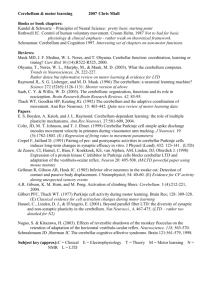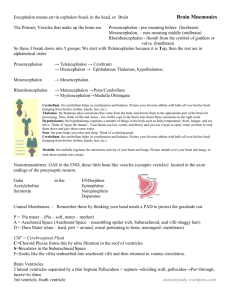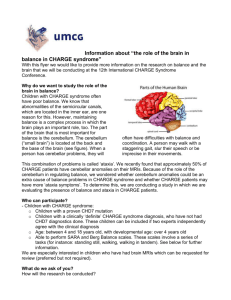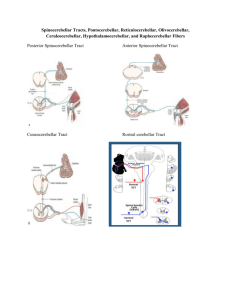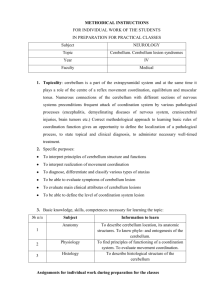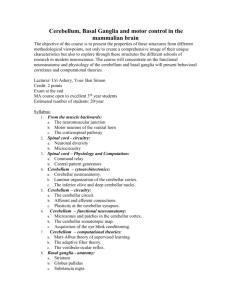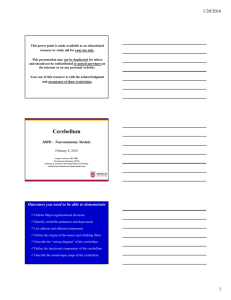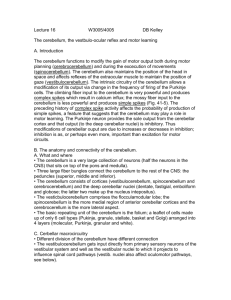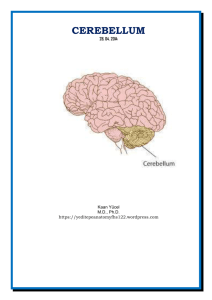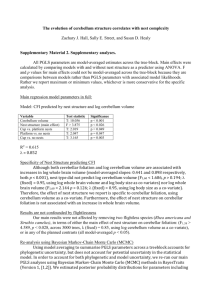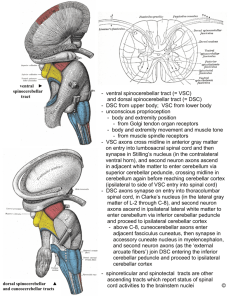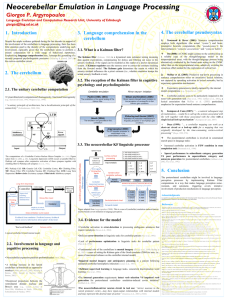The Cerebellum
advertisement
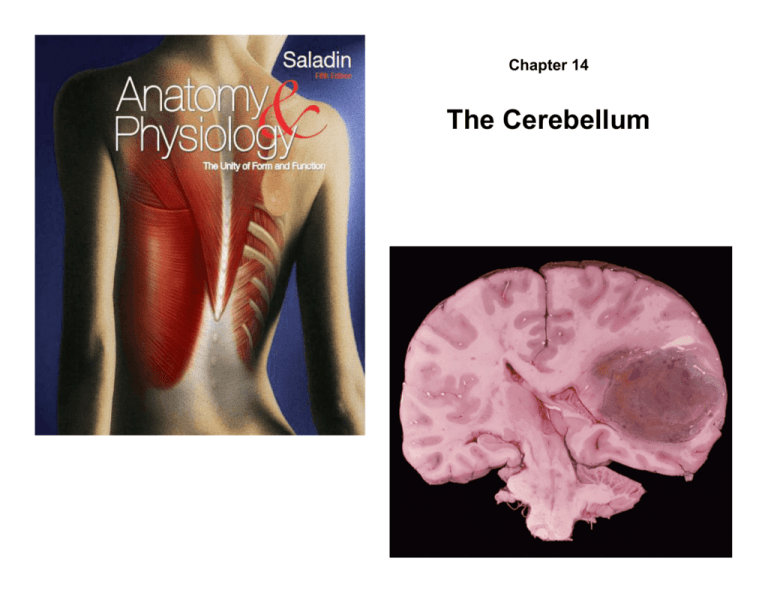
Chapter 14 The Cerebellum Cerebellum Anterior Vermis leaves • the largest part of the hindbrain and the second largest part of the brain as a whole • Only 10% total mass of brain Anterior lobe Posterior lobe Folia Cerebellar hemisphere Posterior (b) Superior view – contains more than half of all brain neurons – 60% surface area of the cerebrum consists of right and left cerebellar hemispheres connected by vermis – cerebellum has 100 billion neurons cortex of gray matter with folds (folia) and four deep nuclei in each hemisphere – Cerebellum’s soma have more synapses than soma of the cerebrum granule cells and Purkinje cells synapse on deep nuclei white matter branching pattern is called arbor vitae • 100,000 synapses per soma compared to 10,000 for other cortical soma Cerebellum Copyright © The McGraw-Hill Companies, Inc. Permission required for reproduction or display. Superior colliculus Inferior colliculus Pineal gland Posterior commissure Cerebral aqueduct Mammillary body Midbrain White matter (arbor vitae) Gray matter Oculomotor nerve Fourth ventricle Pons Medulla oblongata • cerebellar peduncles – three pairs of stalks that connect the cerebellum to the brainstem – inferior peduncles – connects cerebellum to medulla oblongata • – middle peduncles – connects cerebellum to the pons • – • most spinal input enters the cerebellum through inferior peduncle most input from the rest of the brain enters by way of middle peduncle superior peduncles – connects cerebellum to the midbrain • carries cerebellar output to thalamus and motor association cortex consist of thick bundles of nerve fibers that carry signals into and out of the cerebellum Cerebellar Functions (1 of 2) • In the 1950s we did not understand function of cerebellum • In the 1970s developed understanding that cerebellum coordinated skeletal muscle performance • Today we understand the cerebellum’s full range of function: – Cognitive • note: children with attention-deficit disorder have unusually small cerebellum – Motor coordination • General role to evaluate certain type of sensory input, monitor muscle performance vs intent (but cerebellum does much more!) • evaluation of sensory input – comparing textures of two objects without looking at them – spatial perception – comprehension of different views of 3D objects belonging to the same object Cerebellar Functions (2 of 2) • timekeeping center – Judge lapse time between two stimuli – predicting movement of objects – helps predict how much the eyes must move in order to compensate for head movements and remain fixed on an object – Coordinates fixed eye vision as head/body moves – Allows predator to catch prey or baseball player to catch a ball! • hearing – distinguish pitch – Distinguish between similar sounding words (rapid vs rabbit) • language output – Relate word “apple” to verb “eat” • planning and scheduling tasks • lesions may result in emotional overreactions and trouble with impulse control • We will examine the cerebellum’s function in “skeletal motor control” in detail when we examine “higher brain functions”.
